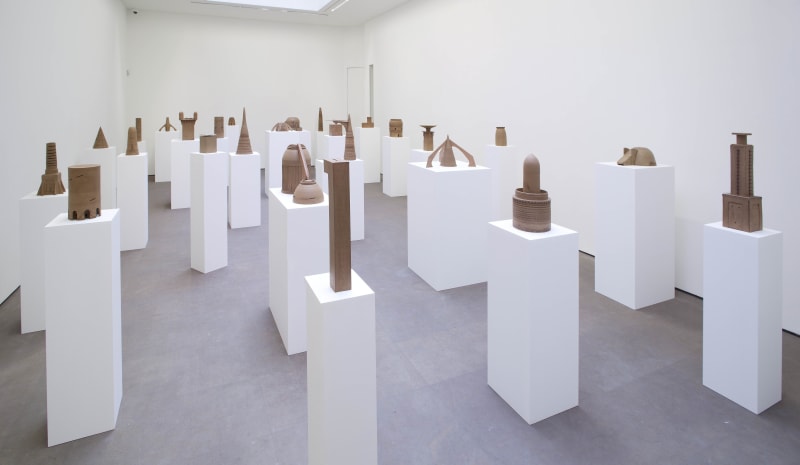Galerie Nathalie Obadia is very pleased to present We owe this considerable land to the horizon line, the first solo exhibition in France of the work of Shahpour Pouyan.
Shahpour Pouyan was born in Isfahan in 1979, a year marked by the Islamic Revolution in Iran, and grew up in Tehran in the midst of the Iran-Iraq War. He currently lives and works between New York and Tehran.
Shahpour Pouyan's practice reflects on the workings of political power, domination and possession through the language of cultural material and forms. Through his drawings, installations and sculptures, he tackles a bifurcated experience of life in Iran and in the U.S., creating a large and significant body of work that draws on a wide range of influences, from traditions of Persian art and Iranian culture to the work of visionary architects such as Etienne Louis Boullée or Claude Nicolas Ledoux.
In the exhibition's foyer, Pouyan presents twelve miniatures based on a selection Persian miniatures depicting scenes from the ascension of Prophet Muhammad. By removing figures, aureoles, and other unreal elements of these miniatures, he transforms them into abstract images or simple architectural scenes. These modified miniatures are subsequently printed on Japanese rice paper, and the prints are further enhanced with gilding and the addition of paint and other media.
In the gallery's main space, Pouyan has installed a series of 28 ceramic domes, towers, mausoleums and monumental buildings. Each conceived and crafted by the artist, these sculptures engage a wide-ranging history of architectural forms dedicated to the display, defense, and consolidation of power. While designing the works, Pouyan drew on archetypal typologies of Islamic, Brutalist, and Fascist architecture, as well as that of 20th-century military edifices. At the same time, the absence of any apparent door, entrance or exit in most of the works lends them a resolutely sculptural quality that unsettles their architectural quality. All works are of the same color of dark sand; each pedestal is of a different height. Infused with a sense of past menace and future foreboding, they comprise the monumental topography of an uninhabited cityscape. A subtle morphing in the shapes of these sculptures caused by the high-firing process lends this landscape the impression of a melting mirage.
Just as the miniatures harness the profound influence of the past and tradition to produce abstract images divested of the human form, the sculptures represent an abandoned future built on the historical fundamentals of a past and futuristic architecture. Shahpour Pouyan creates a godlike position citiscape after Ibn Shakir, 13th century miniaturist who observed the fall of Baghdad by Mogul army from the top of a minaret.
Another important point of reference for the artist, one that seems to haunt much of Pouyan's oeuvre, is the Biblical tale of the Tower of Babel, which tells of humankind's misguided attempt to build a tower to heaven. The chimeric landscape depicted by the artist appears to warn against the utopian promises of past empire and nation-building projects, framing architecture as an interpretation of unbridled human ambition.

